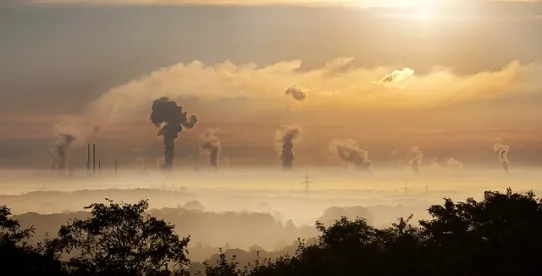Today President Trump announced on Twitter that the U.S. was revoking California’s waiver under the Clean Air Act (CAA) which allowed it to impose stricter tailpipe emission standards than the federal ones. California’s Governor Newsom and Attorney General Becerra immediately announced that the state would file suit to challenge the revocation.
While the revocation has been characterized as an immediate rollback, the federal corporate average fuel economy (CAFE) standards[1] established under the previous administration, which are consistent with California’s, remain in place. Last year the Trump administration proposed to rollback those standards, freezing the efficiency and emission rules in 2021 and canceling further increases in stringency set through 2028. The final rule has not yet been issued. It is rumored that it will not be, as the administrative record supporting it has many problems and most acknowledge that it faces significant legal hurdles.
A little historical context is helpful. California began regulating tailpipe emissions in the 1960’s under then-Governor Reagan to combat air pollution. When the CAA was signed by President Nixon in 1970 it included a provision, Section 209, that allows California to establish stricter standards by obtaining a waiver of the normal federal preemption rules from U.S. Environmental Protection Agency (EPA). Once granted, other states then can adopt California’s standards. Thirteen states and the District of Columbia have adopted California’s current standards.
For 30 years, under both Republican and Democratic administrations, Section 209 waivers to combat air pollution were routinely granted. In April 2007, the U.S. Supreme Court decided Massachusetts v. EPA, 549 U.S. 497 (2007), ruling that greenhouse gases (GHGs) are pollutants under the CAA. In December 2007, the Bush administration denied California’s request for a waiver to impose tailpipe emission standards aimed at reducing GHGs. California promptly sued in January 2008, joined by 11 other states. That case was pending before the U.S. Supreme Court when President Obama took office. In 2009, the parties settled the case before the Court issued its decision, and in 2010 the U.S. and California reached an agreement that aligned the state and federal standards. Those standards were subsequently expanded and a new waiver was granted in January 2013. It is that waiver that is now being revoked.
While litigation is inherently uncertain, it appears that California has a good case for challenging the revocation. Not only is the revocation unprecedented, there is no provision in the CAA providing for it. Section 209 only establishes the criteria for granting a waiver; it’s silent as to revocation. In 2013, the U.S. determined that the criteria for the waiver had been met, and both the states and the industry have acted in reliance on that determination for more than 6 years. The U.S. has also asserted that the federal Energy Policy and Conservation Act (EPCA) preempts California’s standards. However, in Massachusetts v. EPA, the Supreme Court ruled that EPCA does not displace EPA’s authority to regulate GHGs, and courts subsequently have extended that rationale to hold that EPCA does not preempt states’ regulation of GHGs under the waiver.
Just as it was in the late aughts, the automobile industry has been put in an extremely difficult position by this dispute. California has the 5th largest economy in the world, and when one adds in the 13 other states that have adopted its standards – states like New York and Pennsylvania – that equates to a large segment of the auto market. Having to produce vehicles to meet two different sets of emission standards would be extremely costly. The industry desperately needs regulatory certainty. Reflecting this, in June, 17 automakers sent a letter to President Trump calling for one national standard that included California, and in July, four automakers reached an agreement of sorts with California on emission standards.
Instead of the regulatory certainty that is needed for the economy to operate efficiently, it appears that this dispute will move into a phase of protracted litigation and years of regulatory uncertainty. The dispute may be good politics for those that want to motivate their base on each side, both Republicans in Washington D.C. and Democrats in Sacramento, but it is pretty clearly bad economics.
[1] CAFE is, essentially, the average fuel efficiency of an automaker’s fleet of vehicles.



 />i
/>i

